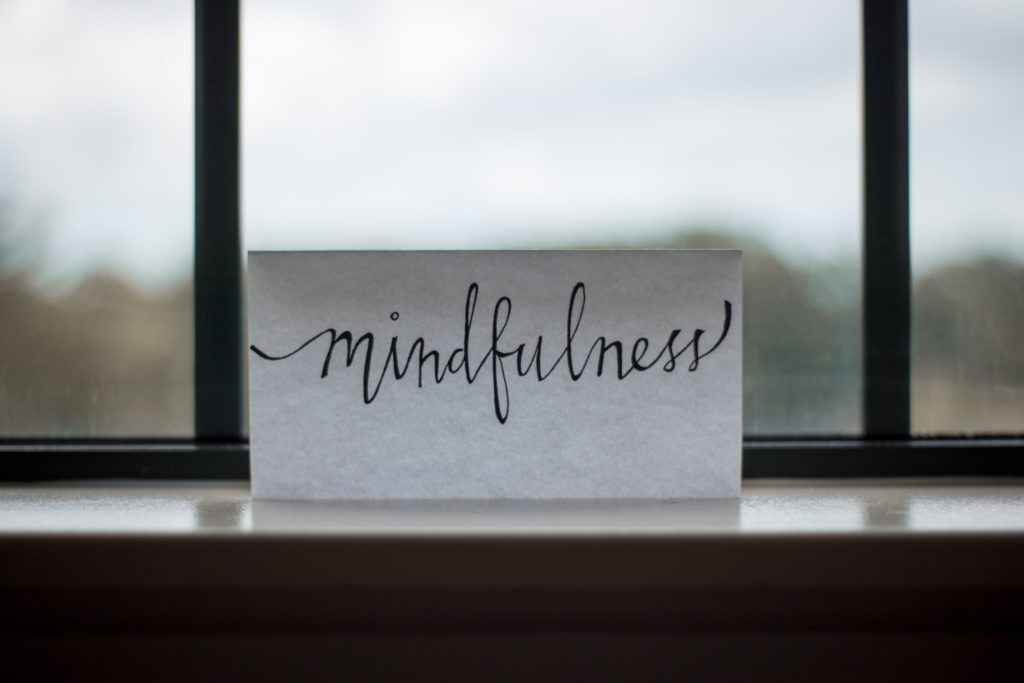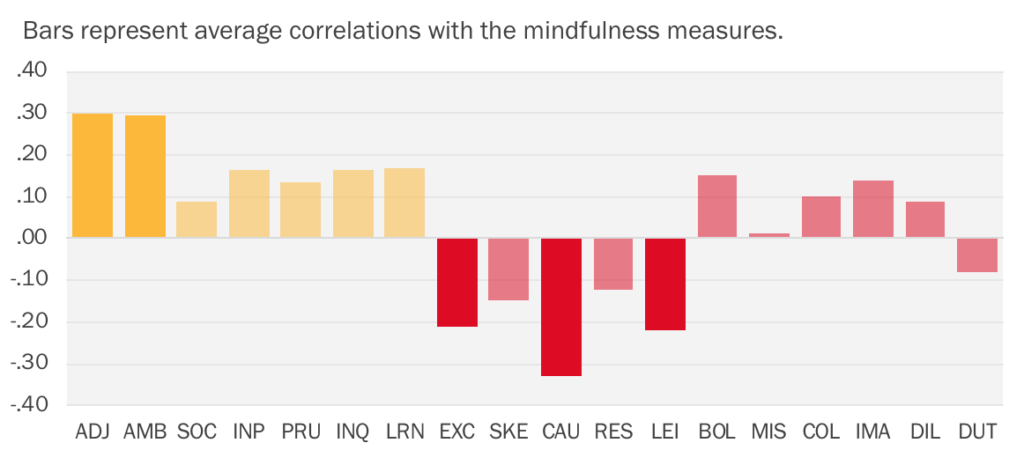
Mindfulness has been around the world for centuries. For roughly 40 years and popularized by Jon Kabat-Zinn in the west, it’s been taught as a set of practices to increase insight, manage pain, and reduce stress. Also known as present-moment awareness, mindfulness has become a bright, shiny object in business literature and, to a growing extent, in research. Everyone is, to some extent, mindful. Hogan practitioner Chris Altizer, Hogan’s Brandon Ferrell, and PhD candidate Alessa Natale explored the question: Is trait mindfulness related to personality? Here’s the answer from their study recently published in Consulting Psychology Journal and covered by Forbes Magazine.
What We Did
This project began in 2016 with Altizer interviewing 17 Hogan coaches on the topics of mindfulness and personality, generating several hypotheses. In 2017 and 2019, we asked two sets of working adults to take the HPI, HDS, and MVPI and two commonly used mindfulness assessments, the Mindfulness Awareness Attention Scale (MAAS) and the Five Facet Mindfulness Questionnaire (FFMQ).
What We Found
We found eight scales significantly related to one or more of the mindfulness scales across the two samples. HDS Cautious had the strongest correlations across the mindfulness scales, followed by HPI Adjustment, HPI Ambition, HDS Leisurely, and HDS Excitable. We found other interesting relationships between Hogan scales and different facets of the FFMQ. We present a summary of the results below.

What It Means
We discuss potential ways to integrate mindfulness practices into the coaching of different personality profiles in the article. These profiles reflect themes of higher emotional reactivity, distractible attention, and a lack of awareness, including awareness of self, of others, and of self-on-others. For example
- Low Adjustment or high Excitable – and especially in combination – may benefit from practices designed to create a pause between perception and reaction.
- High Cautious, especially in combination with low Adjustment, may benefit from practices designed to increase insight and reduce anxiety.
- Practices designed to increase awareness may benefit moderate- or high-risk Moving Against cluster profiles, particularly for the highly Adjusted, whose confidence may increase their risk of dominating others with less concern.
We also suggest that different personality profiles are likely to be open to different mindfulness practices. Some may be inclined toward various forms of meditation, and others to forms of dialogue or breathing practices. Of course, some will likely reject mindfulness at face value but may be open to practices like journaling, deliberate movement, or intentional eating. A key to understanding the application of mindfulness practices is that they are developable competencies – there’s no magic, therapy, or religious conversion, as Altizer wrote inMindfulness: performance, wellness, or fad? published in Strategic HR Review (2017).
Summary
There is no “silver bullet” practice that suits all profiles or people, which will likely come as no surprise to Hogan coaches regardless of their knowledge of mindfulness. As to integrating mindfulness as part of a development strategy, just as we bring in experts to build certain skills, coaching a client toward mindfulness practices may be best done by recommending a formal course, such as Kabat-Zinn’s Mindfulness-Based Stress Reduction, or, for the more adept, guided self-study on one of the many available device-apps. There are as many paths to mindfulness as there are different personality profiles. Coaches and consultants are encouraged to explore mindfulness practices as an option for developing leaders and choose based on what they learn on the journey. The journey is the destination – as challenging as that can be for some personalities, some more than others.